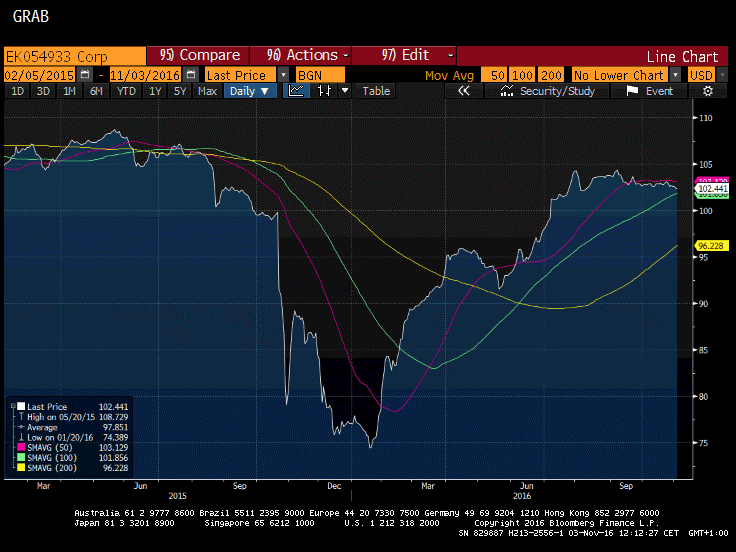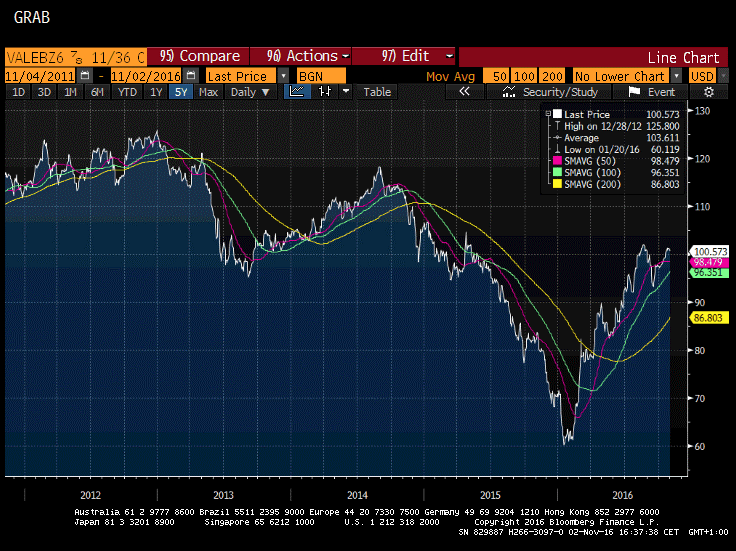With age sometimes comes wisdom. The wisdom to understand that operating on principle alone is not enough and how sometimes, we do the wrong things for the right reasons or more simply put, how the ‘road to hell is often paved with good intentions’. Dodd Frank, the attempt by the Obama administration to regulate the financial services industry, may be a good case in point it. Clearly, after the 2008 credit crunch, one of its more important provisions was to reign in risk taking by systemic institutions especially in a post-apocalyptic world where tax payers were left footing the bill. It was another example, and a step too far for the electorate to accept, where governments had privatized gains made by financial institutions (sometimes fraudulently) whilst nationalizing their losses. All agreed, capitalism would not survive in its current form if legislation wasn’t enacted to try and prevent a repetition. When we see how Goldman had a HY trader that had a £100MM P&L in Q3 and that BoA handily beat Q3 estimates due to bond trading, one can wonder if actually much has been done there…but perhaps we’ll save this for another article.
What is certain though, is that the devil is in the details. And since it’s bordering on the impossible to differentiate between market making activities and speculative trading, Dodd-Frank is starting to show how it may have unintended consequences that may actually detrimental for markets…and when the VaR offered to traders is reduced, it creates problems. Combine that with the fact that, post the consolidation in US investment banking in ’08 and ’09, there are only and handful of intermediaries left that can act as liquidity providers when most participants are selling, this will create a rush to the exits.
If you call a desk today looking to sell some paper, traders in banks will work your order in 1 million dollar increments and then call you back for the rest, rarely committing their books to bid for the paper. In a crisis, it will be even worse and there will be no buyers, leaving participants to cross trades amongst themselves which we all know in times of stress where all players are looking to sell at the same time, will be impossible to do. What we call ‘gap risk’ is when markets, as they fall, only find support at much lower levels and essentially gap down. If it’s good paper and recovery value is higher than the value of the bond, efficient markets will ultimately reprice them on the upside but only after many market participants are left with serious losses.
OTC markets in credit are hugely sensitive to gap risk but thanks to central bank intervention, haven’t been properly tested yet. Negative rates have led to indiscriminate buying to chase yield and pretty much every time spreads on instruments of carry widen, there are buyers who jump in. Add to that the fact that central bankers are now also competing to buy this paper, it’s been hard to find sellers which has been exemplified by this year’s rally.
“In EM though, we’ve witnessed the problem of gap risk first hand” opines Hicham Hammoud who is launching an EM fixed income and macro UCITS Alternative fund with Notz Stucki “and goes on to add “when gap risks are tested at some point in time in developed markets or the Chinese credit markets it might look like what we experienced in Brazil last year”.
The chart below shows how Millicom, a LatAm telco operator fell by 20 points in a week in September 2015 on the back of the correction in EM led by China and prospects of higher rates in the US. It’s a good company with solid fundamentals revenues of above £6.5Bln, positive free cash generator and gross debt to EBTDA at 2X. The paper has come back almost as rapidly as it fell currently trading at 102.

Vale, the Brazilian mining conglomerate, is another case in point. Although its paper didn’t collapse as quickly, it fell by 50% from 120 to 60. It has come back nicely since but it does feel the market for EM corporate and sovereign debt has relived a Lehman moment.

Source: Bloomberg
“Traders and fund managers in DM credit need to contend with this reality around gap risk that we in the EM world have been living with for a while now. There will be times, perhaps in 6 months, perhaps in a year, where the bottom will fall out of some OTC markets. Perhaps a steepening yield curve will be the trigger, perhaps not. They appear liquid today because there’s volume but don’t be fooled, this liquidity is simply unidirectional as all players are buyers and liquidity takers at the same time. When this reverses, and history teaches us time and time again that it will, this trend will reverse with very few buyers on bank prop desks taking anyone’s calls. Buyers beware but in a similar way to what we saw in Brazil and like in every crisis, a gap sell off will also create tremendous opportunities” concludes Hammoud.